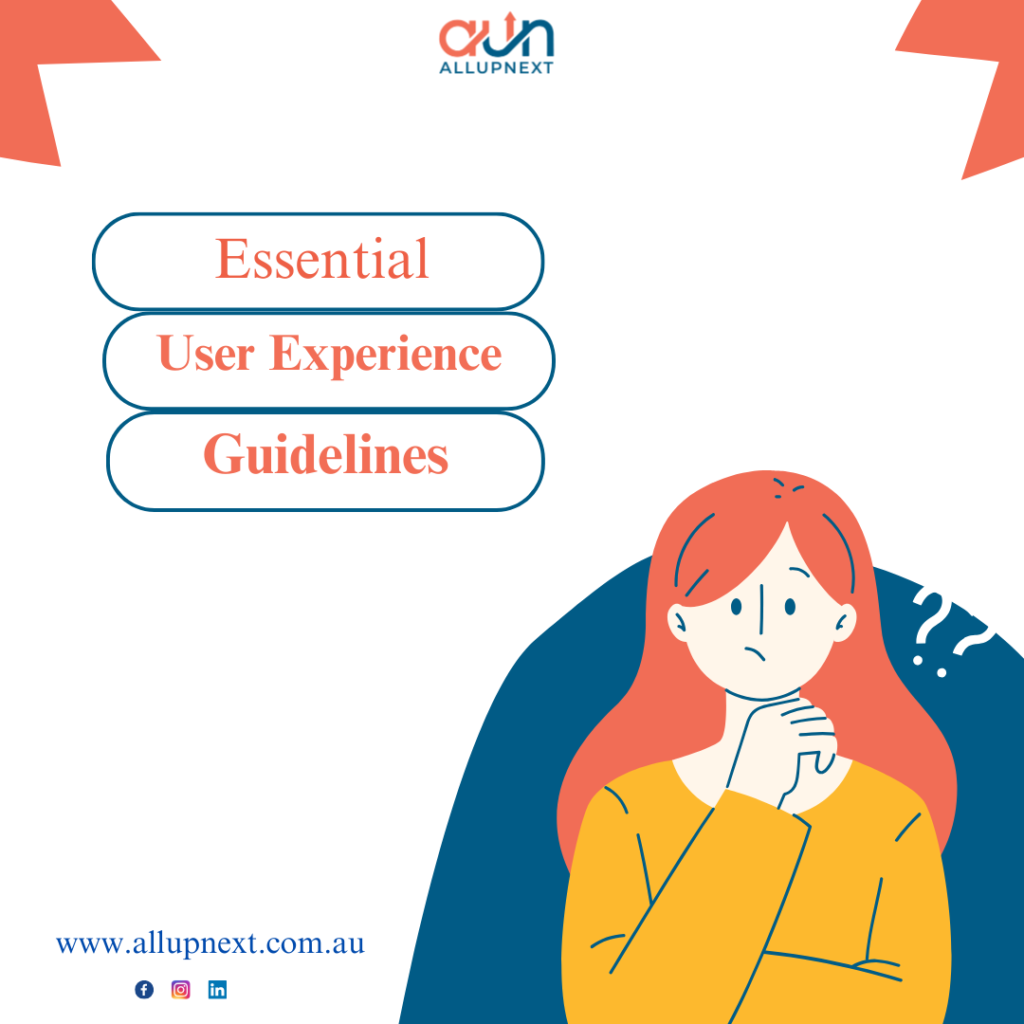Essential User Experience Guidelines: Mastering In Web Design

User experience guidelines must know by every web designer for web design, creating a visually appealing website is just the tip of the iceberg. The true essence of a successful website lies in delivering an exceptional User Experience (UX) that captivates and engages visitors. In this comprehensive guide, we will explore the key User Experience guidelines that every web designer should follow to create websites that not only look stunning but also provide a seamless and user-centered experience.
Understanding User Experience (UX)
User Experience (UX) encompasses every aspect of a user’s interaction with a website, including its usability, accessibility, and overall satisfaction. A well-designed website anticipates the needs and preferences of its users, guiding them effortlessly through their journey while meeting their goals. Achieving a positive UX leads to higher engagement, longer visit durations, and increased conversions.
User Experience (UX) Guidelines in Web Design
1. Clear Navigation and Information Architecture:
A well-organized and intuitive navigation system is the backbone of a user-friendly website. Keep the navigation menu simple, with clear labels that accurately represent the content. Group related pages together and implement a logical hierarchy to ensure visitors can find what they’re looking for with ease.
2. Responsive and Mobile-Friendly Design:
With the increasing use of mobile devices, responsive design is no longer a luxury—it’s a necessity. Ensure your website adapts seamlessly to various screen sizes and orientations. Test your design on different devices to ensure consistent functionality and readability.
3. Fast Loading Times:
Slow-loading websites can deter users and negatively impact SEO. Optimize images, minify code, and use browser caching to ensure your website loads quickly. A faster website enhances user satisfaction and encourages longer browsing sessions.
4. Readable Typography:
Choose fonts that are easy to read across different devices and sizes. Maintain a balanced contrast between text and background to ensure content is legible. Consider factors like line spacing, font size, and paragraph length for a comfortable reading experience.
5. Consistent Branding and Design Elements:
Maintain a consistent visual identity across all pages. Use a cohesive color palette, typography, and design elements that reflect your brand’s personality. Consistency fosters a sense of familiarity and trust among users.
6. Intuitive Forms and Interactions:
Forms are crucial for user engagement, but they should be simple and intuitive. Minimize the number of fields and provide clear instructions. Implement real-time validation to help users correct errors before submitting.
7. Visual Hierarchy and Content Prioritization:
Guide users’ attention by establishing a clear visual hierarchy. Highlight important elements through size, color, and placement. Prioritize content based on its relevance and the user’s journey.
8. Accessible Design:
Ensure your website is accessible to users with disabilities. Use semantic HTML, provide alt text for images, and consider the use of screen readers. Accessibility not only benefits users but also enhances your website’s SEO.
9. Engaging Call-to-Action (CTA):
Your CTA buttons should stand out and clearly convey the desired action. Use action-oriented language and position CTAs where they align with the user’s journey, whether it’s signing up for a newsletter or making a purchase.
10. Minimalistic Design:
Less is often more in web design. Embrace whitespace to create a clean and uncluttered layout. Avoid overwhelming users with excessive visuals or information.
11. User-Centered Content:
Craft content that speaks directly to your target audience. Address their pain points, answer their questions, and provide solutions. Use language that resonates with them and avoid jargon.
12. User Testing and Iteration:
Regularly conduct user testing to gather feedback and identify pain points in your website’s UX. Use the insights to make iterative improvements and refine the design based on actual user behavior.
Conclusion
User Experience Guidelines is the heart and soul of effective web design. By adhering to these essential User Experience (UX) guidelines, you can create websites that not only capture the user’s attention but also provide them with a seamless and enjoyable journey. Remember, the key is to put the user at the center of your design decisions and constantly strive to enhance their experience. By doing so, you’ll build websites that leave a lasting impression, foster engagement, and drive meaningful interactions.
Looking for Web Design Company for any business or firm, Let’s connect with us on AllUpNext Technologies
|| +61 468 323 894 ||
|| info@allupnext.co.au ||


